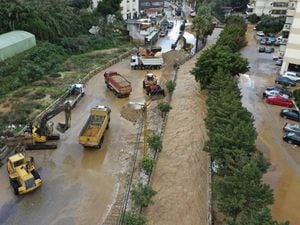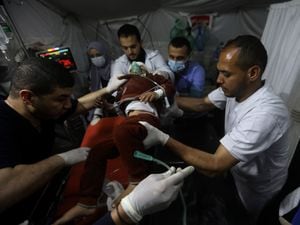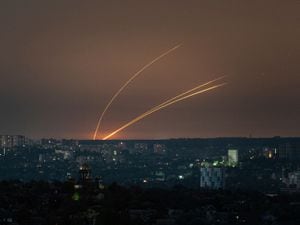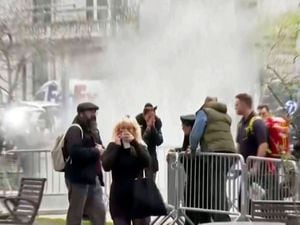Storm causes death and devastation in Lebanon
Residents in some Beirut neighbourhoods awoke on Wednesday to find their cars immersed in water.

A storm that battered Lebanon for five days has left an eight-year-old Syrian girl dead, flooded neighbourhoods and paralysed major mountain roads.
Residents in some Beirut neighbourhoods awoke on Wednesday to find their cars immersed in water as rivers overflowed.
Some of the worst affected areas were the northern Beirut suburbs of Antelias and Hay al-Sollom just south of the capital, where two rivers overflowed, flooding some car parks and the ground floors of buildings.

“All those who were affected by the storm will be compensated,” Higher Relief Committee chief Mohammad Kheir told reporters during a tour in Antelias, where trucks were unloading sand on the sides of the Fowar Antelias river to prevent further floods.
The storm, dubbed Norma, began on Saturday.
In the northern town of Minyeh, the body of an eight-year Syrian girl who had been missing since Tuesday afternoon after she fell into a river was found the next morning in a nearby orchard.
In the village of Dahr el-Baydar, several bulldozers were working on opening the highway that links Beirut with the Syrian capital Damascus after it was covered with about a metre of snow.

The UN refugee agency, UNHCR, said in a statement that some 11,000 Syrian refugees in 151 settlements were affected by the storm. It added that some 70,000 Syrian refugees are at risk.
In the eastern Bekaa Valley, home to tens of thousands of Syrian refugees, many had their tents flooded with water and mud adding to their misery. Others had their tents covered with snow as temperatures dropped.
Police blocked the highway and prevented cars and trucks other than four-wheel drive vehicles from passing for safety reasons before it was opened for all vehicles on Wednesday afternoon.
In the impoverished Palestinian enclave of Gaza, downpours followed two days of windy, dusty weather, bringing relief to some people but adding constraints to many others, who cannot afford heating.
Households in Gaza get about eight hours of electricity a day, followed by a similar period of blackout.
In a poor neighbourhood in Khan Younis, southern Gaza Strip, residents clustered around fires they built from cardboard and leftover timber.
“We suffer when the winter comes, we make fires to warm the children,” said Imad Zu’rob, a local resident. Inside, he said rainwater leaks through the roof of his makeshift dwelling, forcing the family to distribute pots to contain the drops.





